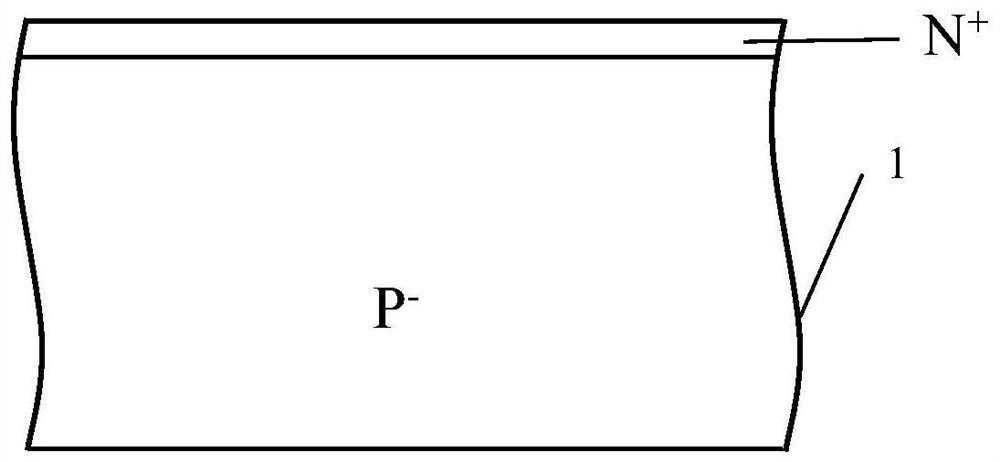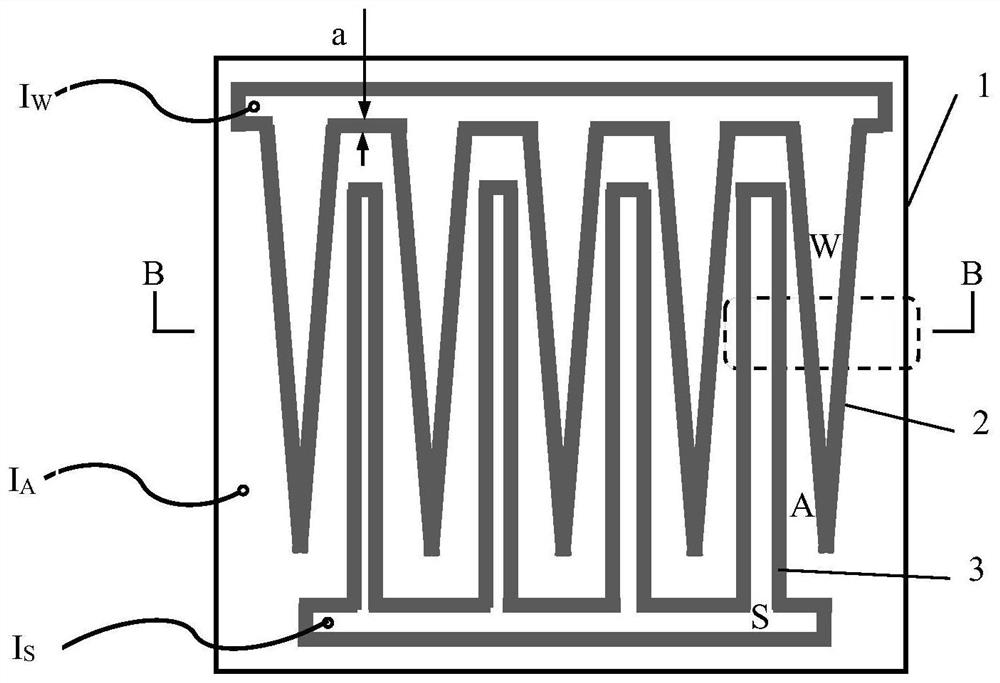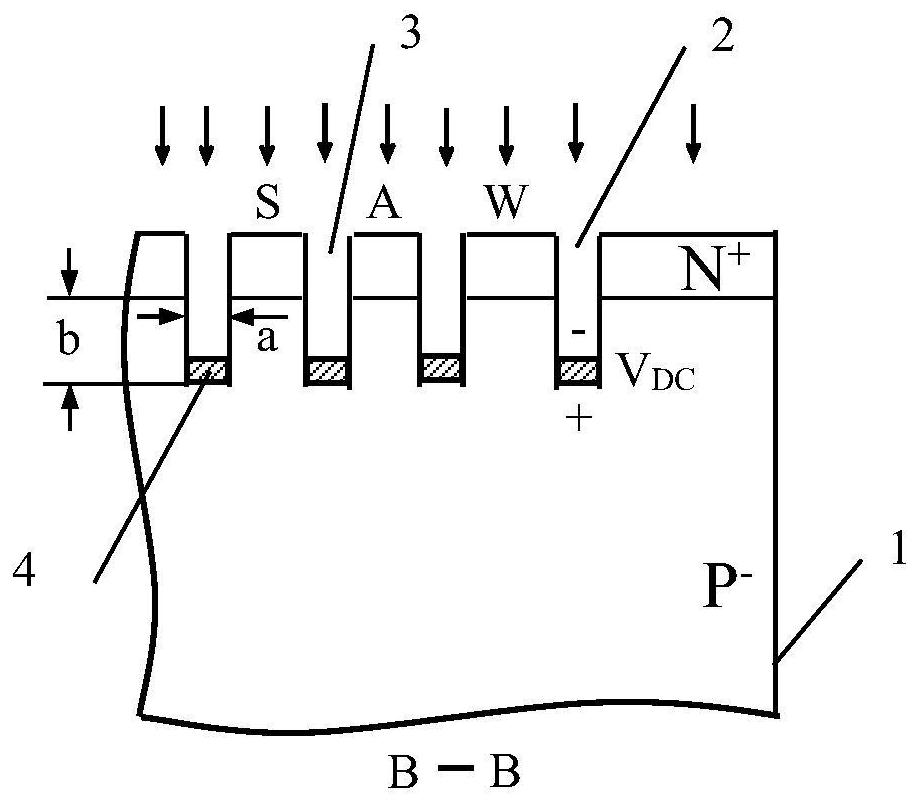Self-powered semiconductor photocatalytic devices with WSA position-sensitive structure
A photoelectric catalysis and semiconductor technology, applied in semiconductor devices, electrical components, chemical instruments and methods, etc., can solve the problem of energy consumption, complex structure of photoelectric catalytic devices, and catalytic purification effect of semiconductor photoelectric catalytic devices not always in the best state, etc. question
- Summary
- Abstract
- Description
- Claims
- Application Information
AI Technical Summary
Problems solved by technology
Method used
Image
Examples
Embodiment Construction
[0010] Self-powered semiconductor photocatalytic device with WSA position-sensitive structure of the present invention such as Figure 1 ~ Figure 3 As shown, at P - N + N of Wafer 1 + A set of wedge-shaped anodes W and a set of strip-shaped anodes S, P are distributed across the surface of the zone - N + Silicon wafer 1 thick 600μm, N + The thickness of the area is 20 μm, the part between the wedge-shaped anode W and the strip-shaped anode S is the third anode A, the wedge-shaped anode W, the strip-shaped anode S, and the third anode A are separated by the wedge-shaped anode channel 2 and the strip-shaped anode channel 3; The channel width a of the wedge-shaped anode channel 2 and the strip-shaped anode channel 3 is 100-120 μm, such as 100 μm, and the bottom of the channel is located at P - area, the channel is located at P - The depth b of the zone part is 50-120 μm, such as 120 μm, and a semiconductor nanowire photocatalytic layer 4 is distributed at the bottom of the c...
PUM
| Property | Measurement | Unit |
|---|---|---|
| thickness | aaaaa | aaaaa |
| width | aaaaa | aaaaa |
| thickness | aaaaa | aaaaa |
Abstract
Description
Claims
Application Information
 Login to View More
Login to View More - R&D Engineer
- R&D Manager
- IP Professional
- Industry Leading Data Capabilities
- Powerful AI technology
- Patent DNA Extraction
Browse by: Latest US Patents, China's latest patents, Technical Efficacy Thesaurus, Application Domain, Technology Topic, Popular Technical Reports.
© 2024 PatSnap. All rights reserved.Legal|Privacy policy|Modern Slavery Act Transparency Statement|Sitemap|About US| Contact US: help@patsnap.com










